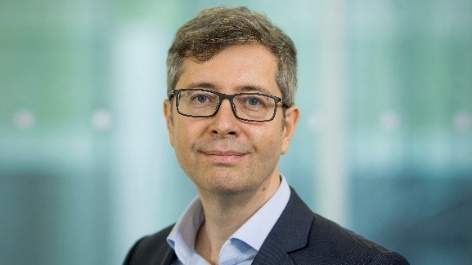Gianaurelio Cuniberti1,2, Hagen Eckert1, Florian Pump1, Martin Roeb3, Christian Sattler3, 4,
Josua Vieten3
1. Chair Materials Science and Nanotechnology, TU Dresden.
2.Dresden Center for Computational Materials Science (DCMS), TU Dresden.
3. Institute of Solar Research, German Aerospace Center (DLR). 4 Chair of Solar Fuel Production, TU Dresden.
Abstract: A wide range of pathways is known to utilize the energy provided by the sun. While solar thermal and photovoltaic electricity generation are the dominant methods in the ongoing discussions, it can be more efficient to use concentrated solar heat for specific tasks directly. For the chemical industry, the integration of a sun driven redox cycle could be transformative in many applications.
Perovskites, a material class that exhibits many exciting properties throughout its members like superconductivity, ferroelectricity, or colossal magnetoresistance, are also ideal candidates to be applied in two-step thermochemical redox cycles. In such cycles, energy from concentrated solar radiation is first converted, then stored, and can be later utilized. In these processes, exploiting solar radiation, the perovskite materials are heated to high temperatures (up to 1,500 °C, depending on the application) and thus transferred by chemical means to an energy-rich, reduced state. In this state, the material can be stored for a specific timeframe before in the second step at lower temperatures it is re-oxidized and energy is released. The stored energy can be used for chemical processes, e.g., in fuel production, air separation, or fertilizer synthesis. For instance, if water is used as an oxidant in the second step, hydrogen is formed by splitting the water molecules. A renewable source of hydrogen using only sunlight and water is a crucial step in shifting to sustainable industry and transportation systems. Another option for the use of such redox cycles in industry is an application in air separation (specifically, for ammonia production), and the splitting of carbon dioxide to form carbon monoxide for syngas production (synthetic fuels for aviation).
Conclusions & Outlook
The presented approach is just one step in the chain of investigations necessary to select materials for real-world testing. Further investigations would need to target thermal stability, the possible amount of chemical energy to be stored, or the price and availability to obtain large quantities of a given material. Just with the combination of many properties, a search can be truly successful. New computational methods can help in this endeavor. To those end, deep learning, for example, is a promising approach for the early screening phases. All in all, high throughput material research is a method that bears the great potential to enable many exciting discoveries.
Keywords: Perovskite materials; Molecular dynamics; Density functional theory; Materials genomics.

Prof. Cuniberti holds since 2007 the Chair of Materials Science and Nanotechnology at the Technische Universität Dresden (TU Dresden) and the Max Bergmann Center of Biomaterials in Dresden, Germany. He is a member of the TU Dresden School of Engineering Sciences (Materials Science) and of the School Science (Physics). Since 2009, Professor Cuniberti is Honorary Professor at the Division of IT Convergence Engineering of the Pohang University of Science and Technology (POSTECH), since 2011 Adjunct Professor for the Department of Chemistry at the University of Alabama and Guest Professor at Shanghai Jiao Tong University since 2019. In 2018 he became faculty member of the transCampus between TU Dresden and King’s College London. Professor Cuniberti is an elected member of the European Academy of Sciences.
He studied Physics at the University of Genoa, Italy (where he got his B.Sc. and M.Sc.) and obtained his PhD in 1997 at the age of 27 in a joint collaboration between the University of Genoa and the University of Hamburg, Germany. Professor Cuniberti has made lasting contributions to a wide range of areas from quantum dots, nanowires and nanotubes to biosystems, addressing quantum transport phenomena, structural stability with important contributions to the theory and modeling of the electronic and structural properties of bottom up nanoscale materials. His R&D work addresses five main areas: (i) molecular and organic electronics, (ii) on-device digital sensing, (iii) nanostructured materials, (iv) methods development and (v) technology transfer, evaluation and commercialization. His research activity is internationally recognized in 403 scientific journal papers to date.